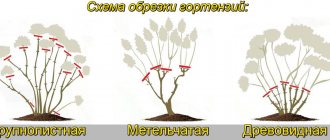Cacti are those plants that are firmly entrenched in the homes of gardeners. The original shape and appearance make this flower stand out from others. Despite the fact that caring for many species is quite simple, gardeners, and especially beginners, are concerned about the question of how to transplant a cactus into another pot.
People know that if they make even the slightest mistake in carrying out the procedure, the plant may stop growing or even begin to deteriorate. There have been cases (and they are not uncommon) when replanting affected flowering, or rather its absence. If you want no troubles to arise after the manipulation, you should follow all the rules.
Important! Young cacti that were just purchased in flower shops deserve great attention. Their transplantation must be treated properly.
Having spent just a few minutes learning how to properly transplant a cactus, in the future this procedure will be performed almost automatically.
How to replant cacti at home
Replanting a purchased cactus is perhaps one of the most difficult manipulations, especially when you are doing something like this for the first time. The reason is that you need to be careful not to prick yourself, and also not to damage the young plant. It is probably difficult for someone to believe that even a small scratch on a cactus can be fatal for it, but it is so. In addition, an accidentally damaged root system, deepened into a moist substrate, will lead to the development of rot and death of the specimen. The same applies to active and unnecessary watering immediately after transplantation.
If you have a cactus growing at home, but it has never been replanted, it is important to know when to carry out the procedure. Although the flower itself will signal this.
This is about:
- Protruding "crown". If the “cap” already protrudes considerably beyond the edges of the flowerpot, then this is a signal that it is time to purchase a new pot and replant.
- Roots protruding from drainage holes. This is a “screaming” sign, which is better not to lead to.
- Cactus wrinkling, growth retardation, loss of elasticity or color.
Sometimes the reasons that indicate that a cactus transplant is necessary are so diverse that they cannot be listed. You just need to observe the condition of the plant and then it will become clear what it is missing.
Some inexperienced flower growers insist that cacti are not replanted after purchase, assuring that they “sit” in good soil and there is no need to further injure the plant. Actually this is not true.
Few people know, but most of these copies that are sold in stores are Dutch. In order for the plants to have a decent appearance and attract buyers with their beauty, they are grown in greenhouses, but at the same time they use the strongest growth stimulants. You won’t be able to do the same at home, although you don’t need to achieve this. This means that being in the soil in which the flower was, but placed in different conditions, it will die. However, that's not all. Often, multiple pests appear in the substrate, which are not always noticeable. Therefore, there is a possibility that, some time after purchase, the cactus will wither and many of the flowers in the house will die. Therefore, the cactus can not only be replanted, it must be done without fail, whether you want it or not.
Transplantation process
Because of the thorns, replanting a cactus can be quite painful. To repot safely, you can use kitchen tongs or dish sponges to grip the plant and remove it from the pot.
If that doesn’t work, you can wrap the plant in paper, carefully turn it over and remove it by squeezing the pot.
It is necessary to carefully examine the roots to see if they are damaged or rotten. When transshipping a plant, the likelihood of injuring the roots is minimal. Damaged roots must be sprinkled with charcoal, having previously crushed it, or crushed activated carbon. Rotten roots must be removed.
Next, you need to make a hole in the soil and place the root system in it, then sprinkle it.
It is necessary to sprinkle it so as not to immerse the neck of the cactus in the soil, because in the future it may begin to rot.
Then gravel is placed on top (not expanded clay!) or a support is installed to hold the cactus in the correct position (the gravel can be removed after 2-3 weeks, when the cactus itself is held in its position).
You should not water the plant for a couple of days, because... It is difficult for it to take root in wet soil.
If several specimens grew in one pot, then when replanting it is necessary to separate them. To do this, you need to carefully wash the roots under running water and then dry them.
When transplanting cactus “babies”, you need to cut off the shoot with a sharp knife, dry it, placing it in a dark place. A wet shoot in the soil will begin to rot and the young plant may die.
How to transplant cacti
If the purchased specimen has wet soil, you should not touch the plant until it dries. Often 7-10 days are enough for this. All this time, the flower should be in the so-called “sump” - a place where there are no other indoor plants.
After this, the following procedures are performed step by step:
- A flower is removed from the flowerpot and carefully examined. Particular attention should be paid to the root system, which many pests love so much.
- Rotten or spoiled roots are cut off. If any problems were noticed with the stem: it has darkened a little or someone has also eaten it, then these areas need to be trimmed. In this case, the cut areas should be treated with activated carbon.
- Next, the cactus is washed well with hot water. It would be a good idea to add an insecticide to the container, which will make it possible to get rid of the disease, if any. In the case when the cactus does not look very healthy, not only the roots, but also the entire flower are washed with water.
- After “taking a bath,” the cactus should be given time to dry thoroughly. True, there is no need to place the flower on its side; it is advisable to place it in a vertical position. Usually 4-5 days are enough for complete drying.
- You need to purchase a special soil mixture in advance, fill the pot with it, and then plant the cactus there. There is no need to water the plant immediately; this can be done after a few days.
Important! In order to save money, there is no need to replant the cactus in the same soil with which it was sold, even if it appears to have a good texture and pests are not visually visible in it.
We can say with almost 100% certainty that this will lead to the death of the plant.
If you don’t want to purchase a ready-made substrate, but want to do everything yourself, then this can be done.
To do this, you need to take some components in equal quantities and mix them well.
This is about:
- gravels;
- fine brick chips;
- washed sand;
- loamy soil;
- crushed charcoal.
Preparing the pot and soil
Choosing the right pot depends on the root system of the cactus. If the plant has long roots, then you can choose a deeper container; if the roots grow around the stem, then it is better to choose a flatter container. In any case, you should not choose a pot for a cactus “for growth”, because The roots of the cactus grow very slowly.
It is important to prepare the pot for planting: wash, disinfect and dry well. The soil should be light and loose, well permeable to water and air. It is useful to add washed and dried river sand.
The soil should not contain a lot of moisture, so expanded clay is placed at the bottom of the pot. It is better not to use old drainage, because... a lot of salts have accumulated in it.
Important nuances
Not only a small or large cactus needs to be replanted, but also an old specimen. Typically, such plants are replanted once every few years. Although in reality it all depends on the specific species. There are cacti that, after a few years, cannot be manipulated at all, unless there is an urgent need for it, when the plant is sick or is affected by pests, for example.
The entire process of transplanting old plants occurs as follows:
- Prepare the soil mixture or buy it ready-made.
- A pot is selected (for adult plants, it is not necessary to buy a larger pot; the size that you have is suitable).
- The cactus is replanted, this is done as with young species.
- Appropriate care is provided.
It is still necessary to replant cacti at home more for the purpose of prevention, in order to protect the plant from attack by parasites.
Rules of care after transplantation
- It is necessary to protect the transplanted plant from direct sunlight; it is better to place it in partial shade. Optimum air temperature 20-25C
- There is no need to over-moisten the cactus soil.
- You can feed the cactus once a month.
AllaAuthor of the article
Did you like the article?
Share with your friends:
Security measures
The cactus is an unusual flower, if only because it has spines. Considering that there are specimens in which these spines are very sharp, you need to be extremely careful and careful not to prick yourself or hurt your hands. In this case, it is best to use thick gloves made of rubber, leather or regular thick material. Some gardeners, in the absence of such, simply wrap the plant in several layers of soft paper. In this case, dishwashing sponges are also suitable.
If you need to plant a tiny shoot, you can take it with your bare hands. Although in this case you need to be careful not to damage the plant itself - so fragile and still tender.
Root bath for cacti
A special treatment method (or root bath) for cacti with damaged root systems, used during replanting. I once read about this method in an old book about cacti, I used it myself and had positive results (with the exception of epiphyllums and decembrists). It happens that a cactus is apparently healthy, but grows very poorly, and the roots turn out to be poorly developed and weak when transplanted. Then you can try the following procedure. After the cactus is removed from the pot, shake off the old soil; you can even wash the roots in warm water, but carefully so that there are no breaks. Then hot water is poured into a cup or glass, at a temperature of about 50-55 °C. For this you will need a thermometer.
A dense material is taken and fixed to a glass above the water. A hole is made in the middle and a cactus is placed there, while the roots up to the root collar should be in hot water, but neither the stem nor the root collar should touch the water. The cactus is kept in this hot water for up to 15 minutes. It is important that the water does not cool down, but is at the same temperature all the time; you can wrap the glass in a woolen shawl, or add hot water, monitoring the temperature with a thermometer, but under no circumstances cover the glass with the cactus. This procedure stimulates root formation in cacti. After this, the cactus roots must be dried for 12-24 hours, and then planted according to all the rules.
Methods for planting cactus without roots
If you separate small pieces from an adult plant, you can get a shoot or a baby. Experienced flower growers say that this material takes root well.
The planting procedure is carried out in spring or summer. This is not without reason, since it gives the “young animals” the opportunity to get stronger by winter.
In order to disconnect the baby from the adult bush, you need to use a knife. It is important to carry out the procedure with extreme caution so as not to harm either the shoot or the adult specimen. Next, you will need to put the baby in some dark and cool place for a short time.
Important! Before planting, pay attention to the cut. If it is wet and the gardener does not notice it, the shoot will rot.
Adult specimens are replanted in winter. The optimal time for this procedure is December. If the procedure cannot be completed at this time of year, then late autumn will do.
Root bug is a dangerous pest of various succulents.
The scale insect is one of the most harmful and problematic pests, especially if it is a root pest. The whole problem will be hidden underground. If lesions become visible on the surface of the earth and on the plant itself, you urgently need to:
- take out their lands
- rinse under running water
- treat with chemicals
The drug Aktara is suitable for combating root insects.
This drug is harmless to the user, can be processed indoors, and has no odor. The plant needs to be soaked in a solution of this drug. After a week, repeat the treatment. If the lesion was small and it was a stem bug, and you found 1-2 pests that look like woodlice, then you can wipe these places with alcohol or an alcohol solution. Separate the plant from other healthy ones and keep observations. If nothing happens again after a while, then it was an isolated incident. If it repeats, you need to remove it from the ground or spill it with a chemical solution and re-treat it after a week. The first treatment is to kill the adults, and after a week, kill the larvae of these pests.
Aktara is a systemic drug that, when it gets on the surface of a plant, kills the pest, and the plant sap also becomes poisonous to the pest. When watering with a chemical, you need to carefully observe and control the plants.
How to propagate a cactus
Having decided when to replant cacti, you need to decide how to propagate them correctly.
The plant can be propagated by seeds or cuttings, however, you should pay attention exclusively to the elastic parts of the cactus. It's another matter when the flower dies. Even if you transplant a large cactus correctly, it will do nothing. In this case, you need to take the best cutting and try to grow a plant from it. To do this, you will need to cut off part of the flower, sharpen the cut, dry it for 8-10 days and plant it.
Propagation by seeds can be more difficult, since you will have to create a greenhouse and carefully monitor the conditions in it.
Transplanting cacti at home can be difficult, but only at the initial stage until you get used to the procedure.
Drainage in a pot
For cacti, drainage is a must, especially if you don't know how to choose the right pot size, if you are planting in a pot with small holes in the bottom, or if you are planting an arrangement of several cacti in one pot. Even drainage holes will not prevent stagnation of water in the roots, because excess water remains in the pan, from where there is not always time to drain it. The dimensions of the drainage are relative - at least 1/6 of the volume of the pot, maximum - 1/3.
For drainage, you can use expanded clay, small pieces of broken red brick, small crushed stone, as well as pieces of foam plastic, or a wine cork cut into small pieces. The easiest thing to do with cork is it can be easily cut into pieces of about 5 mm. But when replanting, the old drainage needs to be thrown away - it accumulates salts. To ensure good drainage from the roots, water the cactus thoroughly before replanting. But after you shake off the old soil, leave the succulent to lie in the shade with the root system open for two hours. It is also a good idea to add broken egg shells to the cactus drainage.
Pot material - what to choose
Different types of succulents are most often grown in pots made of baked clay or plastic. Expensive ceramic flowerpots look beautiful and traditionally remain in demand, although they are not without drawbacks. They have the following characteristics:
- Porosity. The surface of clay products “breathes”, quickly absorbs and evaporates moisture, but this is not always good: the plant has to be watered more often, which leads to the formation of a salt coating on the inner walls of the pot and rapid alkalization of the soil.
- Heavy weight. Heavy containers are stable, you can safely grow tall species of cacti in them, but they are difficult to move from place to place.
- Ability to maintain shape. Ceramic flowerpots practically do not change in appearance over time and plant roots are unable to destroy them, but if handled carelessly, they simply break.
Plastic pots are either disposable or reusable.
The first ones are very cheap, break easily and are used mainly for pre-sale transplantation of plants grown in greenhouses and greenhouses. Reusable flowerpots are made of dense plastic; they are also light in weight, but relatively durable. They look much more attractive, but they also cost significantly more.
It is not recommended to grow large succulents in them: the low weight of the flowerpots makes them unstable, capable of tipping over even from a slight push. However, their main drawback is that the walls of plastic products do not allow moisture to pass through. To prevent the roots of cacti growing in such pots from rotting, the amount of water for watering them is limited to ⅓ of the volume required by plants living in ceramics.
In addition, the substrate enclosed in plastic dries unevenly - its surface is already completely dry on top, but moisture still remains in the deeper layers. Flowerpots made from this material are better suited for planting low and medium-sized plants.
A small container contains less soil, so the evaporation of excess liquid occurs more evenly and the watering procedure will not cause damage to the roots of the succulent.











